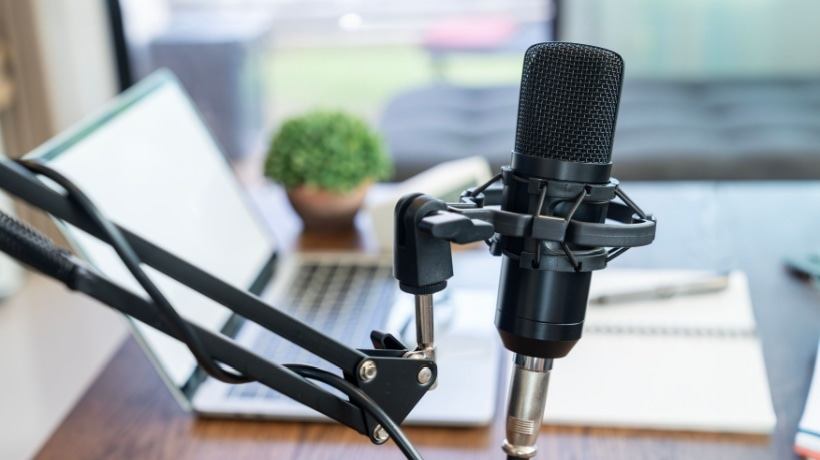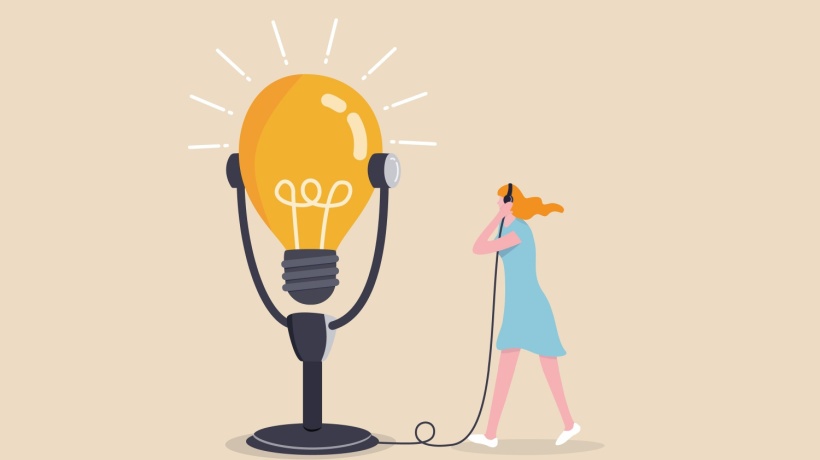Essential Metrics You Should Monitor To Prove The Effectiveness Of Podcasts In eLearning
It is undeniable that more and more eLearning developers have started incorporating podcasts in their online courses to diversify learning materials and engage learners. But are there more benefits to using podcasts in eLearning beyond enhanced learner engagement? And, if so, what metrics should you keep track of to demonstrate them? In this article, we will explore a few practical steps and specific metrics that can provide tangible proof of the learning effectiveness of podcasts.
Must-Know Steps For Assessing The Learning Effectiveness Of Podcasts
1. Know What You're Trying To Achieve
All training materials exist in an online course to achieve one or more specific learning objectives. These might include acquiring certain skills or knowledge, learning to apply them in real-life situations, or increasing learner engagement and participation. Therefore, before you start making a plan to measure the effectiveness of podcasts in learning, you must establish the goals you want to accomplish. This will provide a clear framework against which you can compare learner performance data before and after learners have listened to the podcast.
2. Utilize Pre- And Post-Listening Assessments
This might be the most straightforward way to assess how effective a podcast is in helping learners acquire new knowledge or skills. Specifically, this approach involves administering a quick quiz or reflective prompt both before and after learners listen to a podcast episode. This will give you a clear idea of their knowledge level prior to the podcast and how listening to it has affected it. When assessing this type of data, consider if podcasts that include interactive elements lead to better knowledge acquisition compared to traditional, passive auditory materials.
3. Gather Feedback
Another way to measure the learning effectiveness of podcasts is by directly asking learners about their thoughts on how podcasts contribute to their learning progress. This can be accomplished by incorporating questions at the end of the podcast that cover issues such as the quality and quantity of content, pacing, real-life application, etc. Let's see some examples:
- Do you think you have learned a lot from this episode?
- Are you confident to apply what you have learned in real life?
- Was the supplementary material useful?
- How was the pacing of the podcast?
Asking listeners to rate these questions on a scale from 1 to 5 will provide valuable information about how to optimize your podcast to be more impactful for your audience. It is also important to have a comment section or direct messaging option, allowing listeners to suggest how the podcast can be improved.
4. Monitor Engagement Metrics
The learning effectiveness of podcasts can be significantly curbed if learners don't engage with them. This might mean that they don't listen to them in their entirety or become disengaged after a few minutes and not interact with additional activities or materials. It is essential that you monitor the right metrics through your podcast hosting platform to ensure that your podcasts are engaging to learners and, therefore, helping them achieve the desired learning results. Let's see what some of those are:
- Listener retention rate. This is the percentage of listeners who listen to the episodes from start to finish.
- Average listening time. This indicates how long listeners stay engaged with the episode. It might indicate that the final minutes of the podcast don't include any engaging activities that maintain the listeners' interest.
- Repeat listens. This lets you know the percentage of listeners who return to an episode. However, it is important to clarify what brings listeners back. Did the episode share a lot of interesting information? Or did they return because they struggled to comprehend the information with just one listen? These scenarios present different situations, with the latter requiring attention and improvement.
- Skip or drop-off points. This metric highlights points in the episode that listeners skip or where they drop the episode altogether. As a result, it indicates uninteresting, repetitive, or low-quality content.
5. Community Engagement Metrics
If your podcast successfully motivates listeners to interact with their peers in the comment section under the episode or on external channels, you can certainly expect better learning outcomes. Exchanging ideas, questions, and insights within the community promotes better knowledge comprehension, allowing learners to explore different perspectives and see how others apply new knowledge in their everyday lives. You can monitor community engagement by tracking how often each episode is shared or mentioned on social media and other communication channels. Moreover, pay attention to how actively learners participate in the conversation by posing questions, responding to others' posts, and reacting to content.
6. Tracking Implementation Of New Skills
An important measure of the learning effectiveness of podcasts is assessing their impact on learners' everyday lives. Specifically, you need to determine whether learners are applying their new knowledge in real life and recognizing its value. To evaluate knowledge implementation, consider asking learners at the end of each episode how they plan to apply what they have just learned. You can also track how many extra exercises, assignments, and tasks learners complete, as well as their scores. This will highlight how well learners understand the material and how likely they are to leverage it in real-life situations.
Conclusion
Measuring the learning effectiveness of podcasts may not be as easy as grading a quiz, but it certainly is possible to achieve. In reality, what you need to do is combine assessment and quiz scores with direct feedback from learners and analyze a variety of other metrics. If you take these steps accurately and regularly, you will gain access to invaluable insights about learner engagement, skill development, knowledge implementation, and other indicators that demonstrate how useful podcasts can be as a learning tool.







